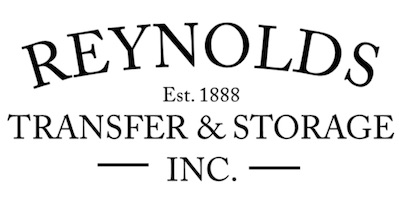Moving to a new home can be the start of a new life adventure. Unfortunately, more often than not, the move process can be a stressful undertaking. There are ways to alleviate some of the stress, but there’s a good chance you will have many things on your “to-do” list. One of your most essential assignments will be to have a thorough understanding of your moving company contract.
There is a collection of paperwork involved in the move process when working with a professional moving company. The moving company contract itself is arguably the most crucial document. However, many supporting documents contribute to the content of the contract.
What Documents Are Needed to Support the Moving Company Contract?
To support the contract, the moving company should provide the following documents:
1. An Estimate is one of the initial documents you will receive from a moving company.
Estimates help moving companies plan the number of crew members and vehicles required to execute the move successfully. Just as important, it gives you an idea of how much the moving company will expect you to pay to move your belongings. No one wants to be surprised with the amount owed after the fact.
Collecting estimates, or quotes, can be time-consuming, but it’s an essential step in the process. Understanding the difference between a binding and non-binding estimate will be to your advantage as you complete this step.
Non-binding vs. Binding Estimates
A non-binding estimate provides a final payment amount that is not guaranteed. However, it should be a relatively close estimate of how much it would cost to move your belongings. The non-binding estimate document should highlight the potential variability of your final cost, which will ultimately be based on the total weight of your items and include any additional services provided. For interstate moves, the moving company will likely prepare a non-binding estimate.
On the other hand, a binding estimate quotes your final payment amount regardless of an unexpected increase (or decrease) in the weight of your items. Remember, receiving a binding estimate doesn’t give you the freedom to add items to the move inventory at the last minute without an additional charge.
Don’t worry if you forgot to include those boxes in the corner of your basement. Even with a binding estimate, you should be able to include those initially forgotten items in the move. However, expect to pay the additional fees after delivery. With a binding estimate, the moving company should not require you to pay more than the listed amount at the time of delivery.
To avoid worrying about after-delivery fees, you and the moving company can develop a revised binding estimate with a new price before the move. Another option is to mutually agree to switch your move estimate from binding to non-binding.
2. The Inventory Sheet lists all the items to be transported under the Moving Company Contract.
This document lists all your items and their condition at the time of pick up. Both you and the moving company representative will sign the completed Inventory Sheet. Before signing the document, you will want to make sure it lists all your items, and the condition of each is accurate. An accurate Inventory Sheet is important because it will help you successfully file a claim on damaged or lost items if necessary.

Once you have noted any missing or damaged items on the moving company’s copy of the Inventory Sheet, you will be required to sign it. You will use this copy in the claims process for any missing or damaged items.
The Bill of Lading is Considered to Be the Official Moving Company Contract.
Bill of Lading is the terminology used to refer to the moving contract. The moving company should include the information from the Order for Service in the Bill of Lading. This moving company contract will be the most important document of your entire move process. You should not sign it unless the moving company has included all the necessary information and you understand all its components.

The Bill of Lading should include the following items:
- The Moving Company’s Information: Name, address, USDOT number
- Your Information: Name, address, phone number
- An identifying shipment, contract, or order number
- The name, address, and phone number of the moving company’s office or agent closest to the final destination of your items
- Pick-up and Delivery Dates (also known as Dates of Service)
- Information for Other Moving Companies that may be involved with the transport of your items
- Identification numbers of vehicles being used to transport your items
- The moving company should attach the Estimate and Inventory Sheet unless it provided them to you earlier.
- Selected option of Liability – either Full Replacement Value Protection or Waiver of Full Replacement Value Protection
We understand how complicated the move process can be. At Reynolds Transfer and Storage, we aim to help you every step of the way. We equip our Move Consultants and Crew Members with the knowledge and training to answer your questions thoroughly. Please do not hesitate to contact us at any point during the process. If you are in the initial stages of your residential moving company search, start by learning more about our moving and storage services through our website.
[Source: Your Rights and Responsibilities When You Move, Federal Motor Carrier Safety Administration’s (FMCSA)]


Recent Comments